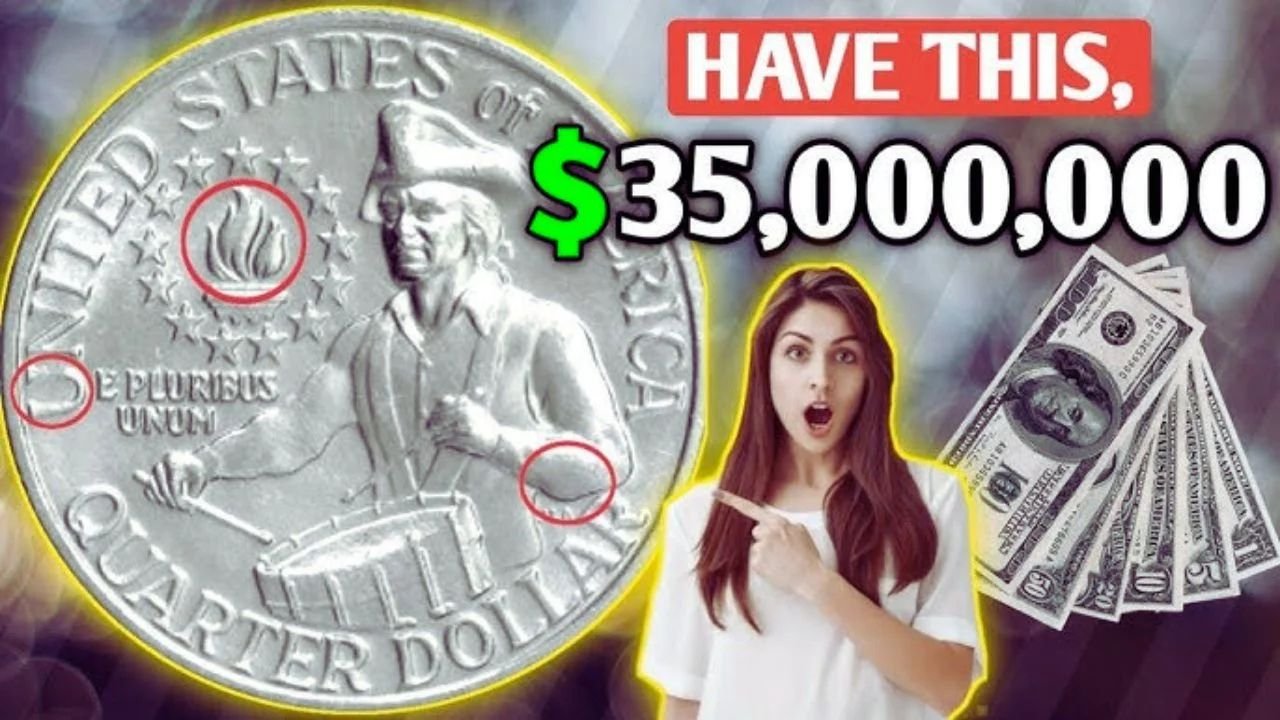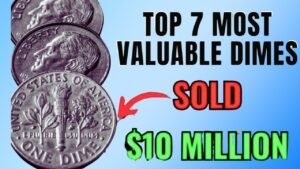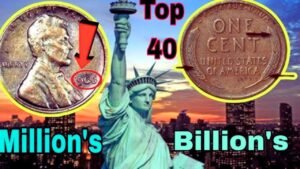Have you ever dug through your pocket change and wondered if it’s more than just spare coins? The 1976 Bicentennial Quarter, minted to honor America’s 200th birthday, could turn that curiosity into cash. Some versions with special flaws or traits sell for massive sums, like $300,000. Let’s dive into why these quarters excite collectors and how you might spot a winner in your wallet.
Why the 1976 Bicentennial Quarter Stands Out
This coin was a big deal in 1976. It marked the U.S. bicentennial with a fresh design: George Washington on the front with dual dates (1776-1976), and a drummer boy on the back symbolizing the Revolution.
Millions were produced, but not all are equal. Errors during minting, such as off-center strikes or extra metal, create rarities. These imperfections make ordinary quarters into prized items for hobbyists and investors.
Beyond errors, some quarters used silver instead of the usual clad mix. This adds to their appeal, especially in top condition.
Top Rare 1976 Bicentennial Quarters You Should Search For
Collectors chase specific varieties of these quarters. Here are five standout types, including their key features and potential values. We’ve expanded the list with an extra rare find for more hunting fun.
Keep in mind, values depend on condition, graded by experts like PCGS or NGC. Pristine coins fetch the highest prices.
1976-D Double Die Obverse
This error shows doubling on the front side, like blurry letters in “LIBERTY” or the date. It’s from a faulty die during production.
A top example sold for $150,000 in 2024. Even lesser ones can go for $500–$5,000.
1976-S Silver Proof Without Mint Mark
Proof coins are shiny and made for collectors. Missing the “S” (for San Francisco) is a huge mistake.
One auctioned for $200,000 in 2022. These are ultra-rare due to strict quality checks.
1976 No Mint Mark Clad Version
Most quarters have a “D” or “S” mint mark. Those without any are errors from the Philadelphia mint.
Values reach $50,000 for mint-state examples. They’re tough to find in circulation.
1976-S Silver in MS69 Grade
Silver-clad quarters graded MS69 (near-perfect) shine with appeal. No scratches or wear here.
These can hit $300,000. High grades are rare because silver scratches easily.
Bonus: 1976 Off-Center Strike
An extra rare type where the design is shifted off-center. This happens when the blank coin isn’t aligned properly.
Depending on the offset, values range from $100 to $10,000. It’s a visual standout.
| Coin Type | Key Feature | Estimated Value (Top Condition) |
|---|---|---|
| 1976-D Double Die Obverse | Doubled front text and images | Up to $150,000 |
| 1976-S Silver Proof (No Mint Mark) | Missing “S” on proof coin | Up to $200,000 |
| 1976 No Mint Mark Clad | No mint letter at all | Up to $50,000 |
| 1976-S Silver MS69 | Near-perfect silver version | Up to $300,000 |
| 1976 Off-Center Strike | Design shifted off-center | Up to $10,000 |
Tips for Identifying Valuable 1976 Quarters
Spotting these isn’t hard with the right approach. Start by gathering your 1976 quarters. Use good lighting and a magnifying tool.
Check the mint mark near Washington’s neck. No mark or a faint one could signal value. Look for doubling: Compare text to a normal quarter.
Silver versions feel heavier and look brighter than clad ones. Test with a magnet—silver won’t stick. Avoid cleaning; dirt can protect value.
Other signs: Blurry edges or extra lines from die cracks. Take photos for comparison online.
Pro tip: Join coin forums or apps for quick ID help. Practice on common coins first to sharpen your eye.
What to Do Next If You Suspect a Rare Find
Found something special? Hold onto it. Don’t use it in vending machines or clean it harshly.
Visit a trusted dealer or send to grading services like PCGS. They’ll verify and grade it, boosting its market worth.
For selling, try eBay, Heritage Auctions, or local shows. Research similar sales on sites like CoinTrackers for fair pricing.
Store coins in protective holders to prevent damage. Insurance might be wise for high-value pieces.
Frequently Asked Questions
What is a 1976 Bicentennial Quarter made of?
Most are clad (copper-nickel layers over copper core). Some special ones are 40% silver, mainly proofs or sets.
How can I tell if my quarter is silver?
Silver versions have a brighter shine and don’t attract magnets. Weigh it—silver is about 6.25 grams vs. 5.67 for clad.
Are all 1976 quarters valuable?
No, common ones are worth face value. Only errors, high grades, or silver types command big money.
Where were 1976 Bicentennial Quarters minted?
In Philadelphia (no mark), Denver (“D”), and San Francisco (“S”). San Francisco handled most silver and proofs.
Can I find these rare quarters in circulation today?
Yes, but it’s rare. Check coin rolls from banks or estate sales for better odds.
How do minting errors happen?
They occur from worn dies, misalignment, or rushed production. The bicentennial rush led to more mistakes.
Ready to Turn Change into Treasure?
Your everyday quarters might hold surprising wealth. With knowledge of these rare 1976 Bicentennial varieties, you’re set to hunt. Grab that magnifying glass, sort your coins, and who knows—you could uncover a $300,000 gem. Start today; the thrill of discovery awaits!




